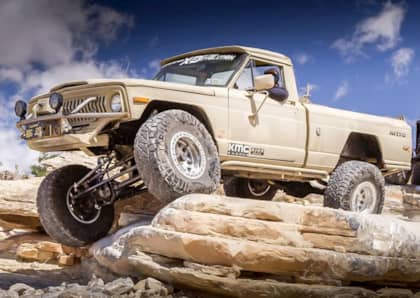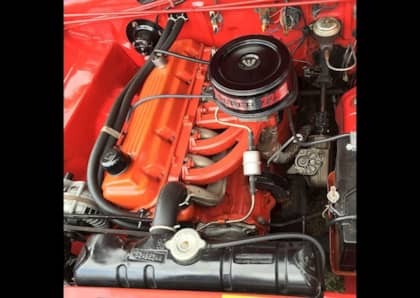A History of the '67-'72 Chevrolet Suburban, The Revolutionary SUV That Ushered In The Modern Era
SUVs have taken over the modern automotive landscape, but there was once a time when they played second fiddle to that most American of classic family rides: the station wagon. Throughout the 1950s and 1960s wagons were the vehicle of choice for anyone seeking to transport their brood with both enough of a buffer between siblings to keep road trips bearable and the kind of luggage space required for a weeks-long vacation.

By the time the Summer of Love was in full swing, however, Chevrolet had introduced a truck that would prove to be a game-changing slow-burn that would gradually shift the balance of power away from the traditional wagon set. The 1967-72 Chevrolet Suburban marked the dividing line between trucks that drove like farm implements and those that could hold their own against passenger cars, opening the door wide for their eventual use as daily transportation by millions of motorists.
Daring To Be Different
The Suburban had long been a part of the General Motors portfolio, with the first iteration combining wagon body, a pickup front-end, and truck chassis, in order to offer a compromise between capability and comfort. It was a formula GM would struggle to refine over the next three decades, with the Chevrolet-branded model (also known as the Carryall) most often erring on the side of the industrial in terms of fit and finish, ride quality, and features.

All of that changed with the sixth generation Chevrolet (and GMC) Suburban, which was based on the radically revised platform given to the C/K pickups. Gone were the tin-can rattle traps that had previously defined the market, and in its place was a truck that had hidden hinges, wrapped headliners, seats that were mounted lower than the previous stool-like perches, and smooth-riding coil springs at the rear (with an independent front suspension on two-wheel drive models, and a leaf-based solid axle setup for four-wheel drive editions). Under the hood, a range of straight six engines and hefty V8s could be specified, along with manual and automatic gearbox choices.

For the first time, truck buyers could walk into a dealership and load up on nearly the same amount of features, comforts, and conveniences available on a standard sedan, convincing owners they could be used as daily drivers. The C/K pickups from this period were also known as 'Glamour' models, and thanks to their combination of strong equipment and sleek styling they quickly outpaced every other brand on the market in terms of sophistication and popularity.
A True Wagon Hybrid
All of the above gave the Suburban a lot of ammo when it went out hunting family buyers. For the first time its long-wheelbase body could deliver the same or better interior room as a comparable station wagon without asking owners to make any sacrifices in the features or livability departments. On top of that, it was a much more capable machine when it came to towing or off-road ability, which made it easier to explore the American frontier (as part of the surging interest in camping and 4x4s at the time) while hauling all of the comforts of home along with you.

Although at first glance the 67-72 Suburban matches the same general template as the (much larger) modern models still on sale from Chevrolet today, there are a few unique differences. The most obvious is the use of a three-door body style, with the passenger side offering front and rear access points and the driver's side restricted to a single front door. This anachronism was limited to the Suburban—other large haulers of the day like the International Travelall opted instead of symmetry—and it would disappear from the design after 1972.

Another intriguing difference was the presence of a panel deliver model that replaced the rear glass with steel-sided, cargo-friendly body work. This model Suburban had long been a backbone of the truck's commercial aspirations, but by '70s it too had been deleted from the order sheet.
Paving The Way Towards The Future
It's perhaps no surprise that the sixth generation Suburban was a massive success, more than quadrupling the number of yearly sales by the end of its run. With so many out there, and with a lot less interest in these wagon-bodied workhorses as compared to same-era pickups, they've slowly started to gather momentum among classic truck fans seeking a fun and practical vehicle for restoration or hot rodding.

The simplicity of its drivetrains make the SUV popular for fans of the ubiquitous small block Chevrolet engine, which is the most common motivator for the Suburban, as well as those seeking to introduce a modern swap such as an LS V8. The vast C10 aftermarket makes customizing the oily bits of the Suburban a cinch.

Hailing from a time where crew cabs are non-existent, Suburbans represent the only real period option for Chevy truck fans to bring more than a couple friends or family members along with them on a drive. Their massive cargo area also makes them appealing for those who want to install bagged suspensions (lots of room for compressors and plumbing), or head out overlanding (sleep inside the truck or stuff it with camping gear). Finally, the on-road comfort of the 67-72 Suburban is unmatched by any of its contemporary SUVs, including the shorter-wheelbase Blazer with which it shares much of its mechanicals.

The Suburban is now the elder statesmen of the sport-utility set, but while its destiny might seem preordained it's really only achieved its current popularity because of GM's conscious decision nearly 60 years ago to step away from traditional trucks and forge a new future with a much improved product. As wagons faded into the background, by the 1990s the Suburban had become firmly established as the most versatile multi-person mover on the market—a title that it still holds among the towing set today.
The Chevrolet Tahoe and GMC Yukon would build on the Suburban's success in the 90s. Check out our feature on the origins of these popular GM SUVs.











